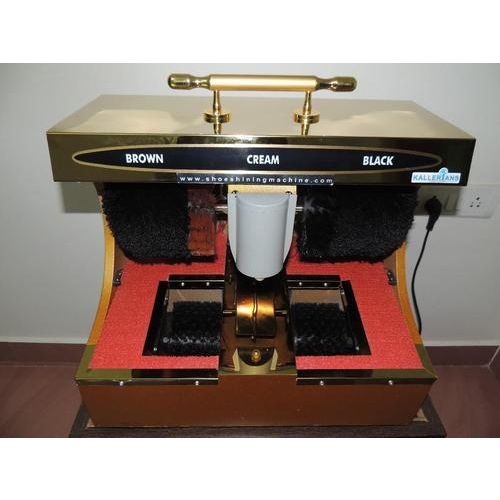Are you searching for a simple and efficient way to clean your dirty shoes? Look no further because a shoe polish machine in Pune got you covered. Today, you can enjoy a complete shoe-care kit along with an electronic shoe polisher to get rid of the scuff marks in your shoes in just mere seconds!
What is an automatic shoe shine machine?
An automatic shoe polisher is geared with everything you need to accomplish a professional-looking fish to all types of footwear. Its soundless motor starts at the press of a handy power switch and further electric controls for releasing and attaching tools like polishing applicators, buffer pads, and brushes.
A dual-speed, electronic polisher, along with its color-coded polish applicators, distribute the ideal amount of shoe cream, polishes, and buff boots shoes of all sizes to a remarkable shine. It can work through a plug-in adapter or batteries, making it the perfect tool for home or travel use.
How to pick the best shoe polish machine in Pune?
Are you planning on buying a polish machine for your home? Below are crucial factors you need to consider before getting one.
- Battery life
- This factor matters, but not much. Often, you will need to start the electric shoe machine for at least sixty seconds. Most shoe machines will plug into the wall to draw all the power to keep the motor power.
- Grip
- If the machine is not gripping your shoes correctly, then it won’t buff out every small scuff and blemish on them. Irrespective of what size of shoe you have, your polisher must be highly adjustable to accommodate every surface and angle of your shoes.
- Speed
- The speed of the brush will identify how fast your shoes shine and, in turn, how great your battery must be. Are you using a plug-in polisher? Then you’re good to go. Keep in mind that the speed must never cause your motor to shake or whir loudly at all.
- Brushes
- The brush material of your shoe polish machine is the most critical part of your device. Check for lamb’s wool, synthetic fibers, or even the rare microfiber covering. Boar hair, horsehair, and plastic bristle hair are acceptable for manual brushes.
- We don’t find anything wrong with those, but you could end up damaging your shoes or making the scuffs worse with the speed of the motor. On top of that, the brush will not do well without the rest of such features, though.
How much you need to use your shoe polish machine will depend on how often and in what weather conditions you wear your shoes. Others polish their shoes after each wear, while some do it every few months.
As a rule, use your shoe polish machine in Pune whenever your shoes begin to look worn or dull.

